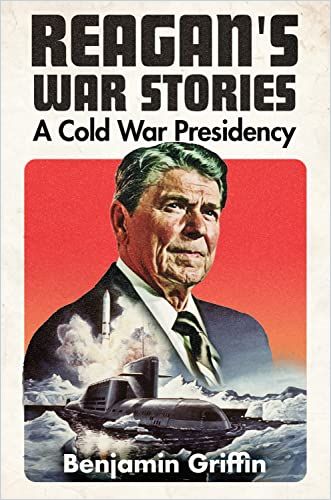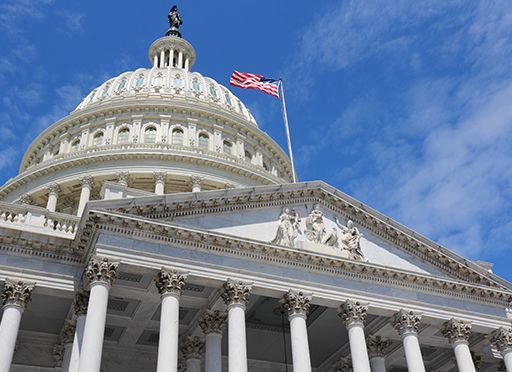Historian Benjamin Griffin deconstructs Ronald Reagan’s genius for turning complex political and social issues into simple good-guys-versus-bad-guys narratives – and the good guys always win.

Reagan’s Deceptive Simplicity
With his folksy presence and memorable one-liners, Ronald Reagan won renown as the Great Communicator. But he was also a consummate fabulist. Historian Benjamin Griffin details how Reagan intuitively understood a narrative’s emotional pull, and how that understanding helped and hurt his administration.
Narratives
A natural storyteller, Reagan used narratives to convey his anticommunism, patriotism and small-government vision. He stored many of his favorite stories and jokes on index cards.
Though personally popular, Reagan remained an enigma, both to the public and within his own administration.Benjamin Griffin
Reagan’s avid consumption in his youth of Westerns, Rudyard Kipling works, and books in which the good guys always won limited him. Archetypal male heroes gave Reagan a vicarious sense of power. But Reagan proved to be an effective leader who communicated powerfully and memorably, and he moved people to act. He leaned into simplistic, good-versus-evil narratives that led to grave errors in Latin America and in US AIDS policy.
Factual accuracy was unimportant to him if the story was memorable and had a message he liked.Benjamin Griffin
Reagan’s former director of the Office of Management and Budget David Stockman portrayed Reagan as adrift when he lacked a simple story to anchor him. Soviet and British leaders remarked on Reagan’s habit of turning complicated policies into soundbites and bedtime stories. During a chat with Soviet president Mikhail Gorbachev and foreign minister Eduard Shevardnadze at a diplomatic summit in the 1980s, Reagan wondered aloud about the possibility of aliens taking advantage of the return of Halley’s Comet to invade Earth. Reagan assured the Soviet leaders that the United States would set aside Cold War hostilities to protect everyone on the planet. The Soviets responded in kind.
Reagan systematically dismissed people who weren’t of European heritage. He became angry after the United Nations expelled Taiwan in 1971. Reagan, then governor of California, called President Richard Nixon to gripe about African delegates celebrating the vote. In a recording of the White House call, Reagan criticized “those monkeys from African countries,” saying they were “still uncomfortable wearing shoes.”
SDI
When Reagan announced the Strategic Defense Initiative (SDI) in 1983, which involved using ballistic missiles to counter hypothetical Soviet nuclear strikes, he blindsided his top advisers. The vaguely worded proposal violated the 1972 Anti-Ballistic Missile Treaty, and everyone in his administration scrambled to formulate a response. Senator Edward Kennedy dubbed SDI the stuff of Star Wars, which became its unofficial moniker.
Science fiction author Robert Heinlein supported SDI, while authors Isaac Asimov and Arthur C. Clarke did not, the latter telling Congress the project was “a technological obscenity.” Heinlein said that because Clarke was an Englishman his opinion was irrelevant. Reagan praised those media figures who promoted SDI.
Tom Clancy
Tom Clancy was a staunch conservative and fan of Reagan. He channeled Reagan’s patriotism in his novel The Hunt for Red October. Clancy’s fictional president ate jelly beans, Reagan’s favorite treat. Published to mixed reviews in 1984, Clancy’s novel seemed destined to disappear. But after Reagan read and publicly praised it, Clancy’s book became a bestseller.
Reagan saw Clancy as an ally who could tell a wholesome, pro-American story. Reagan despised critically acclaimed anti-Vietnam War films, and he regarded Clancy’s novels as a continuation of the good-versus-bad stories and movies from Reagan’s youth.
In 1989, Reagan told UK prime minister Margaret Thatcher that, to better understand the Soviets, she should read Clancy’s Red Storm Rising. Reagan dubbed the book “research” for his talks with Gorbachev, and it helped guide his thinking on America’s stance on nuclear arms. Clancy’s novel drew on themes Reagan loved, including a reluctant hero, the defeat of Soviet troops by technologically superior US forces and the rise of democracy in the USSR. In the thriller, Soviet forces invade West Germany and seize Iceland. Europe regroups with US reinforcements. A Soviet general balks at an order for nuclear attack, mounts a coup and finds a sensible ending to the conflict. The United States and Europe prevail, thanks to technological advantages such as stealth fighters that Soviet radar cannot detect. New technology dazzled Reagan, and Clancy framed it in terms he could understand.
After Reagan’s second term ended in 1989, Clancy wrote Panache with behind-the-scenes direction from General Colin Powell. Powell recognized that Clancy’s work had boosted the image of the Navy, and he thought the author could do the same for the Army. When the movie of The Hunt for Red October came out in 1990, President George H.W. Bush arranged for a prerelease screening and party at the White House.
Desert Storm was a Clancy novel brought to life, and a Clancy novel never ends poorly for America. The good guys win.Benjamin Griffin
The Clancy ethos of American military superiority played out in Desert Storm, the 1991 operation that ejected Iraqi forces from Kuwait. As in a Clancy novel, good triumphed, and there was scant gratuitous violence to make Americans question their patriotism. After the Soviet empire’s collapse, the quick victory in a made-for-TV war helped exorcise the ghosts of Vietnam – a longtime goal of Reagan’s. But Desert Storm demonstrated Americans’ lack of imagination and penchant for oversimplification, and it did nothing to ensure a lasting peace in the Middle East.
Review
Benjamin Griffin offers a gifted analysis of Ronald Reagan’s susceptibility to certain books and films, particularly Westerns. Griffin paints Reagan as occasionally delusional and not always able to discern the difference between fact and fiction – or not all that interested in the difference. But even so, Griffin notes Reagan’s determination to stymie the Soviet Union and that his tactics proved surprisingly effective. He details how Reagan’s simplistic approach both furthered and undercut America’s progress in various arenas. Griffin digs into Reagan’s infatuation with bestseller Tom Clancy’s worldview and how Clancy shaped Reagan’s policies, often to the bafflement of his administration. This slim, perceptive volume provides a unique take on a consequential president’s thought processes.







